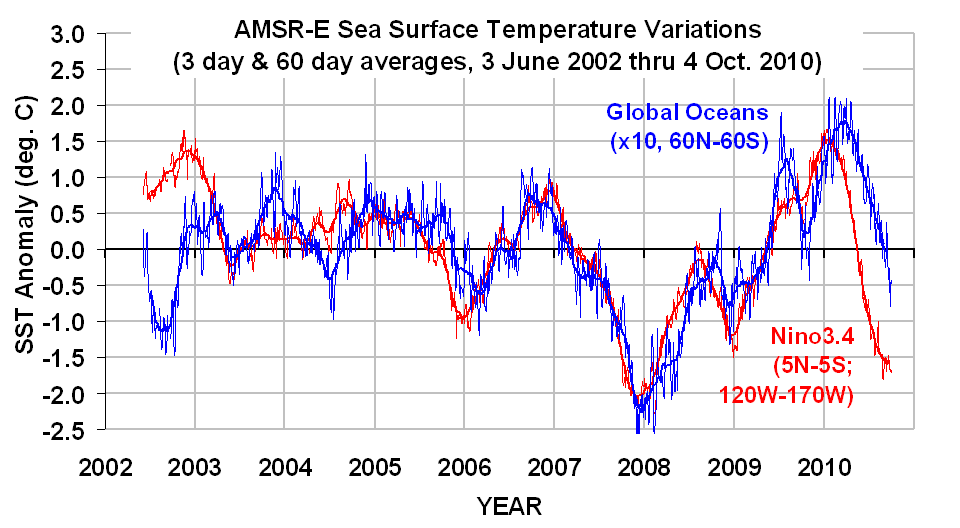Since I just provided the September 2010 global tropospheric temperature update, I decided it was time to update the global SST data record from the AMSR-E instrument flying on Aqua.
The following plot, updated through yesterday (October 4, 2010) shows that both the global average SST, and the Nino3.4 region average from the tropical E. Pacific, continue to cool.
(click on the plot for the full-size, undistorted version. Note that the global values have been multiplied by 10 for easier intercomparison with Nino3.4)

Past experience (and radiative-convective equilibrium) dictates that the global tropospheric temperature, still riding high at +0.60 deg. C for September, must cool in response to the cool ocean conditions.
But given Mother Nature’s sense of humor, I’ve given up predicting when that might occur. 🙂
 |

 Home/Blog
Home/Blog



